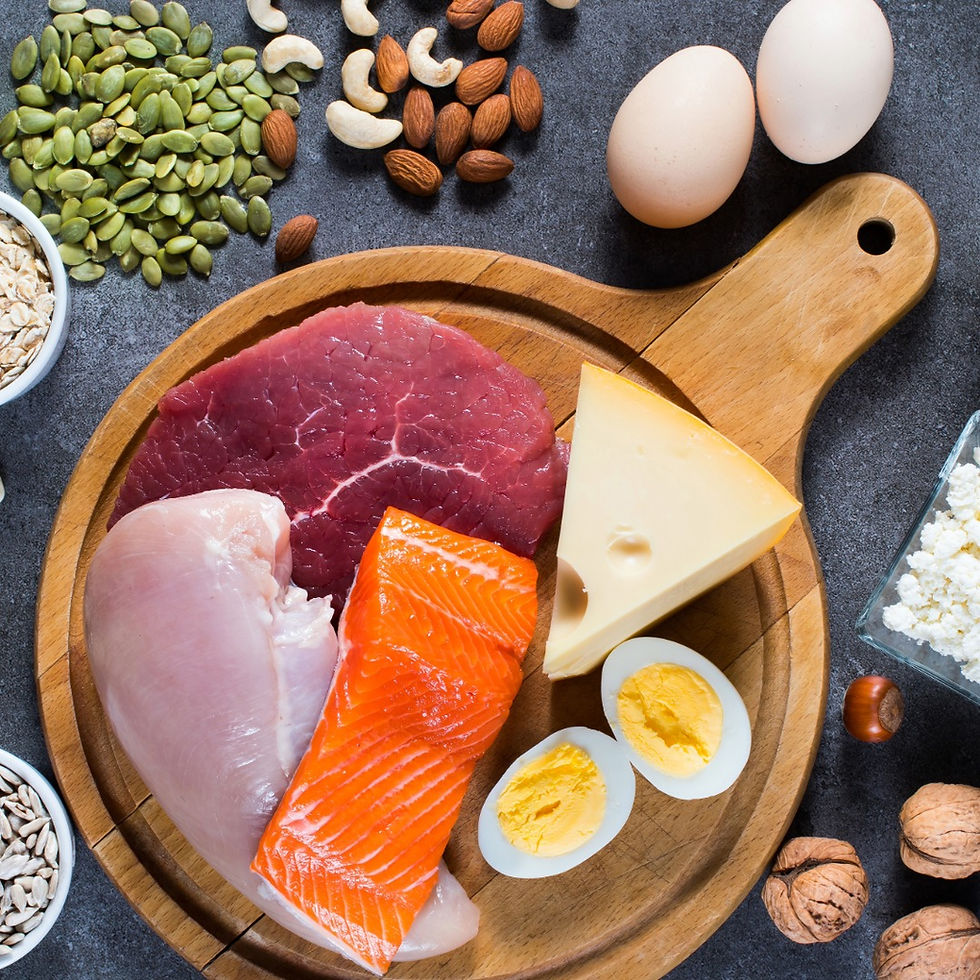Combining Cryotherapy with Training
- packanimalfit
- Jun 8, 2023
- 3 min read
Matt Siekbert, owner of Pack Animal Fitness gym in Saint Petersburg, Florida, is often asked about the latest trends and techniques in weightlifting and bodybuilding. One topic that has gained significant attention in recent years is cryotherapy. This innovative approach to recovery and performance enhancement has captured the interest of athletes across various sports, including weightlifters and bodybuilders. In this article, we will explore how weightlifters and bodybuilders can effectively incorporate cryotherapy into their training regimens, providing practical tips, guidelines, and best practices for timing cryotherapy sessions in relation to workouts and competitions. Additionally, we will discuss optimal frequencies, durations, and integration with other recovery strategies.
Cryotherapy, also known as cold therapy, involves exposing the body to extremely low temperatures for a short period. This can be achieved through various methods, including whole-body cryotherapy chambers, ice baths, or localized cryotherapy devices. The benefits of cryotherapy are wide-ranging and can have a positive impact on recovery, performance, and overall well-being.
When it comes to weightlifting and bodybuilding, cryotherapy can play a vital role in enhancing recovery and optimizing training outcomes. By incorporating cryotherapy into their routine, athletes can potentially reduce inflammation, alleviate muscle soreness, and accelerate the healing process. Furthermore, cryotherapy may improve circulation, increase metabolism, and enhance the body's ability to burn fat, all of which are crucial for achieving optimal body composition and strength gains.
To effectively integrate cryotherapy into a weightlifting or bodybuilding training regimen, timing is key. It is recommended to schedule cryotherapy sessions strategically in relation to workouts and competitions. While there is no one-size-fits-all approach, the following guidelines can serve as a starting point:
Pre-Workout Cryotherapy: Some athletes find value in using cryotherapy before their training sessions. The cold exposure can help reduce pain perception, increase alertness, and improve blood flow, potentially leading to enhanced performance. However, it's important to keep in mind that individual responses may vary, and experimentation is key to determine the most effective approach for each athlete.
Post-Workout Cryotherapy: The immediate post-workout period is an optimal time for cryotherapy. By exposing the body to cold temperatures after intense exercise, athletes can mitigate inflammation, reduce muscle damage, and expedite the recovery process. Cold therapy can also help minimize the delayed onset muscle soreness (DOMS) commonly experienced after challenging workouts.
Competition Preparation: Leading up to a competition, cryotherapy can be a valuable tool for managing fatigue and optimizing recovery. Athletes may consider incorporating regular cryotherapy sessions in the days preceding the event to ensure their bodies are in prime condition. However, it is crucial to experiment with cryotherapy well in advance of any major competition to understand how an individual's body responds and to fine-tune the timing and frequency accordingly.
In terms of frequency and duration, the optimal approach will depend on individual factors, training intensity, and personal preferences. As a general guideline, athletes can start with 2-3 cryotherapy sessions per week, with each session lasting 2-4 minutes. It is important to note that cryotherapy should be used in moderation and in conjunction with other recovery strategies, such as adequate sleep, proper nutrition, and active rest days. The key is to find the right balance that supports optimal recovery and training adaptations.
Integrating cryotherapy with other recovery strategies can further amplify its benefits. For example, combining cryotherapy with massage therapy, foam rolling, or stretching can enhance muscle recovery and promote flexibility. Additionally, contrast therapy, which involves alternating between cold and warm temperatures, can further optimize circulation and recovery. Experimentation with different combinations and modalities can help athletes discover the most effective recovery regimen for their individual needs.
In conclusion, cryotherapy can be a valuable tool for weightlifters and bodybuilders aiming to optimize their training and recovery. By strategically incorporating cryotherapy sessions into their routines, athletes can potentially enhance performance, expedite recovery, and improve overall well-being. However, it is important to remember that individual responses may vary, and experimentation is necessary to find the most effective approach. Always consult with a qualified fitness professional and your doctor before starting any exercise program or making significant changes to your training or nutrition regimen.
Remember, we are Stronger in Packs, unleash your fitness potential at Pack Animal Fitness! Visit us online at https://www.packanimalfit.com/ or come back and take a tour of our great gym at 5985 49th S N, Saint Petersburg, FL 33709.
Disclaimer: The content provided in this article is for informational purposes only. Always consult with a qualified fitness professional and your doctor before starting any exercise program or making significant changes to your training or nutrition regimen.





